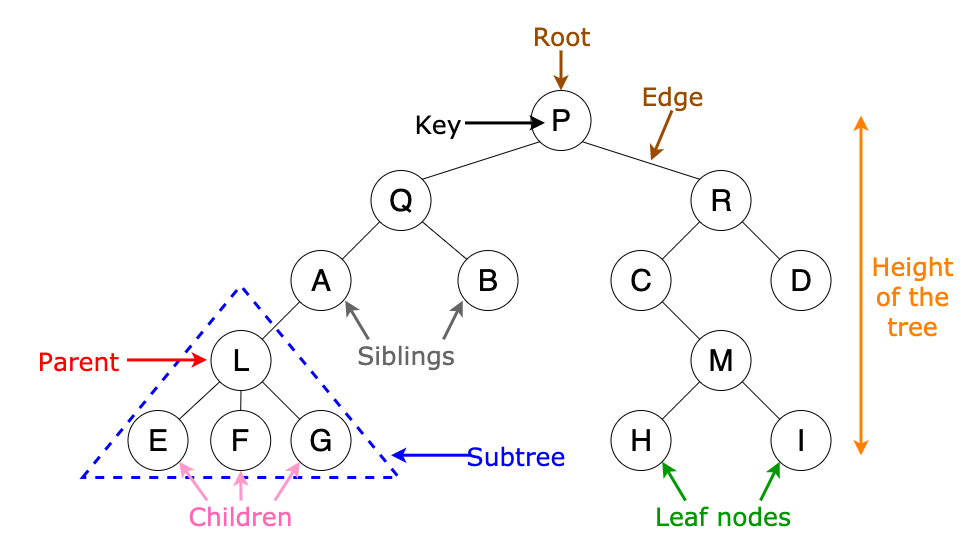Trees : Introduction to Data Structures and Algorithms | Topic - 2
What is a Tree?
A tree is a nonlinear data structure. It is a collection of nodes where each node contains addresses of other nodes. A tree data structure has a root node, internal nodes and leaf nodes. The number of children of a node determines the type of tree i.e. if a node contains addresses of two other nodes, it is a binary tree.
There are various types of trees namely binary tree, binary search tree, B tree, B+ Tree and some complex trees like Red-Black trees and AVL trees.
Why use Trees?
Trees have a variety of applications. Some of them are as follows:
Syntax trees and annotated parse trees are used in compiler design for every program we compile.
A priority queue scheduling follows a heap data structure which is a kind of tree.
A tree-based data structure “Trie” is used in contact management systems.
Sets in C++ are implemented using Binary Search Tree
Terminologies you might come across while exploring trees
Root node: The topmost node in the tree
Leaf node: The bottommost nodes are the leaf nodes. They do not have any children
Child: If a node is a descendant of any node, it is called a child node
Internal node: A node with at least one child is an internal node
Depth(Height): The vertical distance of a node from the root is called the depth of that node

Types of Tree Traversals:
Tree traversal has three basic types:
Inorder: Here the root node appears in between the left and right node
Preorder: Here the root node appears before the left and right node
Postorder: Here the root appears after the left and right node
Here is the code to implement these traversals.
#include <bits/stdc++.h>
using namespace std;
//Making a tree node to store the tree's value and its children
class Node
{
public:
int data;
Node* left; //left children
Node* right; // right children
Node(int val)
{
data = val;
}
};
void inorder(Node* root)
{
if(root==NULL)
return;
inorder(root->left);
cout<<root->data<<" ";
inorder(root->right);
}
void preorder(Node* root)
{
if(root==NULL)
return;
cout<<root->data<<" ";
preorder(root->left);
preorder(root->right);
}
void postorder(Node* root)
{
if(root==NULL)
return;
postorder(root->left);
postorder(root->right);
cout<<root->data<<" ";
}
int main()
{
struct Node* root = new Node(1);
root->left = new Node(2);
root->right = new Node(3);
root->left->left = new Node(4);
root->left->right = new Node(5);
cout<<"\nThe inorder traversal is as follows : \n";
inorder(root);
cout<<"\nThe preorder traversal is as follows : \n";
preorder(root);
cout<<"\nThe postorder traversal is as follows : \n";
postorder(root);
}
Binary Tree vs Binary Search Tree
A binary tree has data representation in a hierarchical format whereas a binary search tree has data representation in an ordered format.
A binary tree allows duplicate values whereas Binary search trees do not allow duplicate values.
Note: The inorder traversal of a binary search tree is sorted
Conclusion
Tree data structure is a very important concept from an interview perspective. Some coding questions you should try are listed below.
Striver's Link: https://takeuforward.org/data-structure/strivers-tree-series-tree-data-structure/
Image credits : Vijini Mallawaarachchi(https://towardsdatascience.com/8-useful-tree-data-structures-worth-knowing-8532c7231e8c)